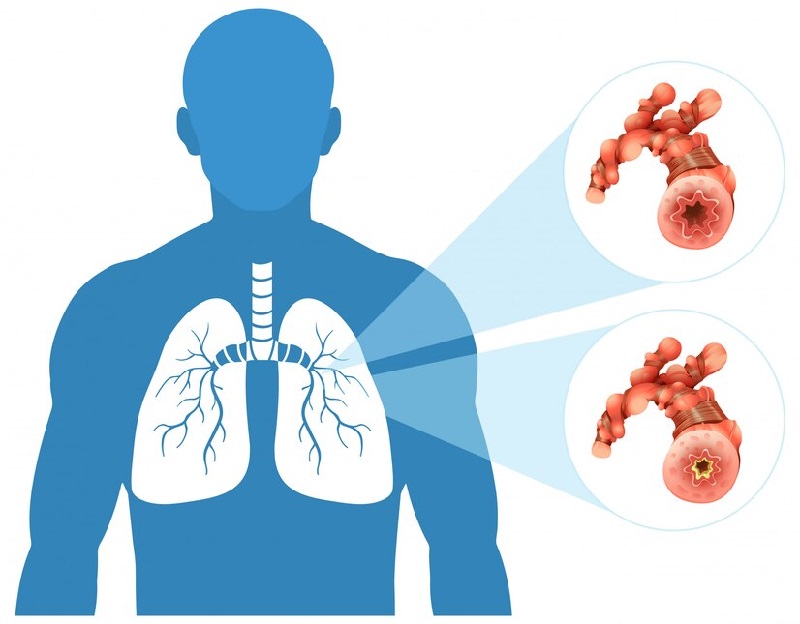Lung cancer is one of the most common diseases in the world and affects ample people, with more than 43,000 new cases every year. Its prognosis usually depends on the early diagnosis of the disease.
People suffering with symptoms like shortness of breath or a cough or chest pain should seek medical advice from a doctor. On the visit, the doctor shall assess your health status and ask questions or carry out an assessment, which may be a physical examination.
To gain more insight on the probable diagnosis, the doctor at Center for Lung Surgery in Thane will perform certain investigations.
Diagnostic Procedures
1. Chest X-ray:
Chest X-ray is usually the first test in lung cancer diagnosis. Conventional radiography generally displays lung tumours as white-grey densities, which give the first clues of possible pathology.
2. CT Scan:
After a chest X-ray examination, a computed tomography (CT) scan is recommended routinely to detect lung cancer at the Center for Lung Surgery at Dr. Bhanushali Hospital. This is an imaging technique. Fluoroscopy that uses x-rays and computers to generate images of the lungs in cross-sectional view is useful in determining tumour size and existence.
3. PET-CT Scan:
In case a CT scan gives a result that shows that there is cancer, then a PET-CT scan is recommended. PET scan is a specific diagnosis technique that integrates positron emission tomography with computer tomography for identification of the current location of cancer cells and to guide the treatment plan.
A PET-CT scan is an invasive procedure but does not cause any pain in the process, the duration of which takes 30 to 60 minutes.
Biopsy Procedures
When imaging tests provide indications of cancer, one may be asked to undergo a bronchoscopy to provide a detailed investigation. This procedure helps the doctors to see the airways and obtain a small tissue sample, a biopsy, for test purposes. One new approach comprises the use of endobronchial ultrasound scans (EBUS), a combination of bronchoscopy and ultrasound, to increase the accuracy of the test.
Additional biopsy options include:
1. Percutaneous CT Guided Biopsy
This is a procedure where a needle is inserted into the target lesion under CT scan guidance to get tissue for biopsy.
2. Thoracoscopy:
This is small surgery where doctors can have a look at certain parts of the chest and take samples of tissue and fluid.
3. Mediastinoscopy:
This technique involves the assessment of the mediastinum—the space midway between both lungs and just above the heart—to allow inspection of the adjacent lymph nodes.
Types of Lung Cancer Surgery
Regarding the type of lung cancer surgery, it mostly involves the removal of a part of the lung or entire lung, known as lung resection. The surgical options include:
1. Pneumonectomy:
This operation takes out an entire lung; it is done when a tumour is large or in a central position in the lung or close to the heart.
2. Lobectomy:
In this procedure, one lobe of a lung is resected. Since the lungs are divided into five lobes—three right and two left—lobectomy is often the surgery of choice for lung cancer whenever possible.
3. Segmentectomy or wedge resection:
These surgeries consist of only some part of the lobe being removed. They may be used if a patient has a small tumour and has limited lung function, and therefore, that full lobe resection is particularly harmful.
4. Sleeve Resection:
This operation aims at anatomic regions such as the large airway carcinomas in the lung. This involves the removal of the part of the airway with the tumour and then rejoining the other parts of the airway. This is preferred to pneumonectomy since more of the lung is preserved in this operation.
The type of surgery depends on whether the tumour is small or large, whether it is located within the periphery or centrally, and the patient’s overall lung reserve.
Conclusion
Lung cancer is characterised by the fact that the symptoms can be lacking until the disease has reached an advanced stage. Globally, the one-year survival rate is about 40%, while the 10-year survival is approximately 10%. These symptoms require people to seek medical attention as early as possible to eradicate or reduce the fatalities.
For expert diagnosis and treatment of lung cancer, consult Dr. Amol Bhanushali, a highly skilled and experienced lung surgeon in Thane. Dr. Bhanushali offers state-of-the-art diagnostic tools and advanced surgical techniques at the Center for Lung Surgery at Dr. Bhanushali Hospital, to ensure the best possible outcomes for his patients.

